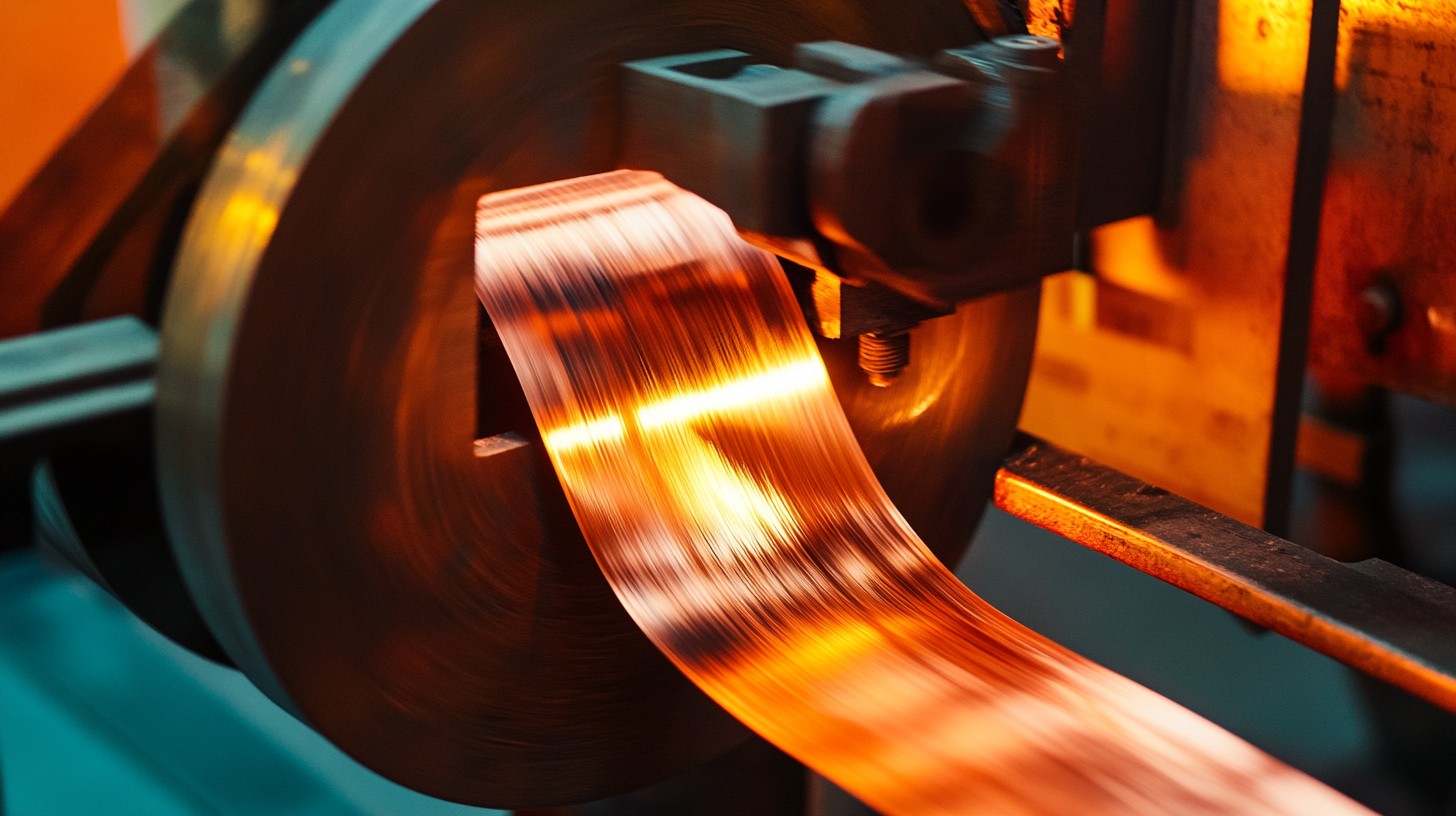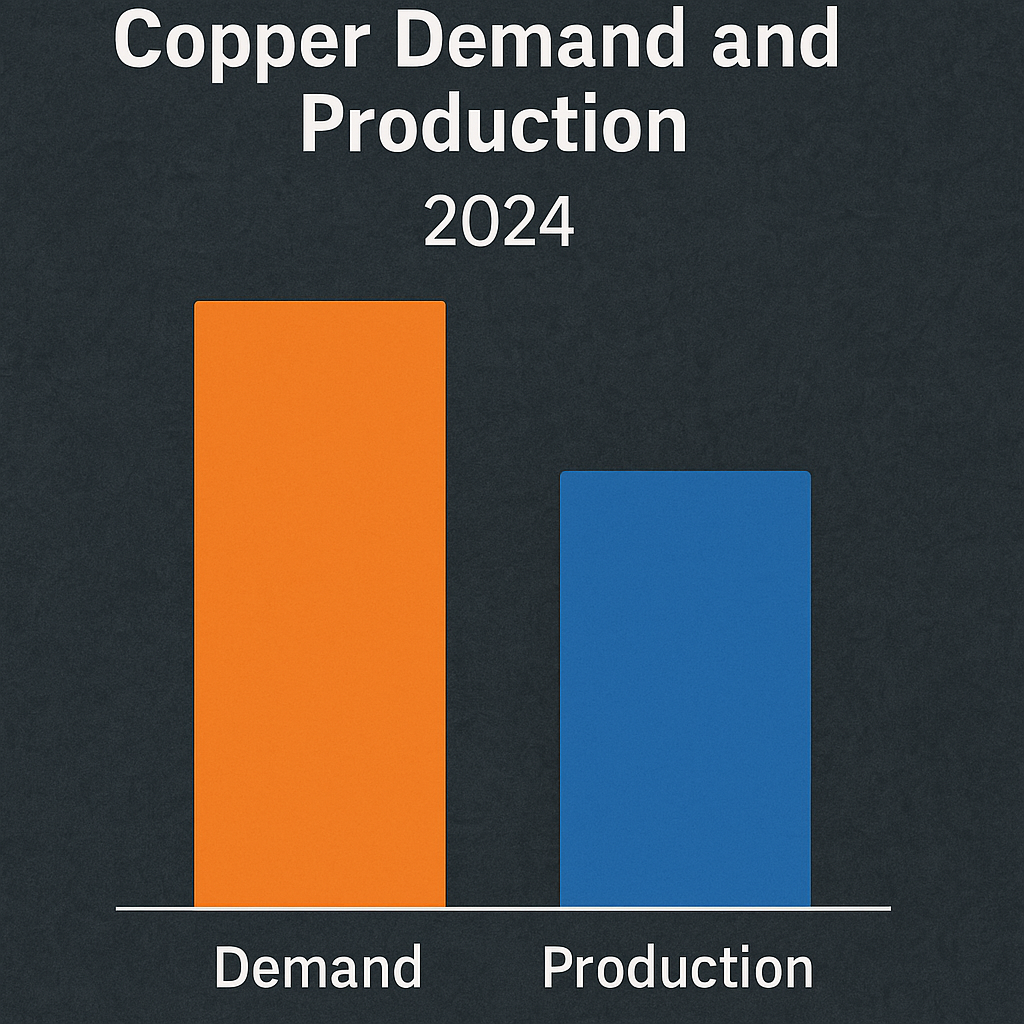
हिंदी में पढ़ने के लिए मेनू बार से हिंदी भाषा चयन करें।
Copper is one of those metals that has played a significant role in human life and industries from ancient times to the modern age. In this article, we’ll explore the history of copper, its global and Indian production, its uses in various industries, investment opportunities, and its future prospects in detail.
History of Copper: From Antiquity to Modernity

Copper is among the earliest metals discovered by humans. Archaeologists have excavated copper beads from northern Iraq estimated to be over 10,000 years old. Civilizations like Mesopotamia and Egypt used copper to make weapons, utensils, and decorative items. In India too, copper was extensively used during the Harappan civilization.
Copper was considered a symbol of purity and strength. During the Bronze Age, the combination of copper and tin gave birth to bronze — a metal that revolutionized the quality of tools and weapons.
Global Copper Production and Demand
Major Producing Countries
The world’s major copper-producing countries include Chile, Peru, and China. Chile is the world’s largest producer of copper, with large mineral deposits in the Andes Mountains. Peru and China also produce significant quantities of copper.
Demand and Supply

In 2024, the global demand for copper reached approximately 26 million tonnes, while supply remained lower than demand. With the rise of electric vehicles, solar energy, and smart city projects, the demand for copper continues to increase.
By 2030, copper demand could surpass 30 million tonnes.
Copper Production and Usage in India
Production Regions
In India, the primary copper mining regions are Rajasthan, Jharkhand, and Madhya Pradesh. However, domestic production of copper in India is limited, forcing the country to rely heavily on imports to meet its requirements.
Key Companies
- Hindustan Copper Limited (HCL):
India’s only integrated copper producer, handling mining, smelting, and refining activities. - Hindalco Industries:
A subsidiary of the Aditya Birla Group, involved in aluminum production as well as copper smelting and refining.
Applications of Copper in Various Industries
Electrical and Electronics
Because of its excellent electrical conductivity, copper is widely used in electrical wires, circuit boards, switches, and connectors.
Electric vehicles use 3 to 4 times more copper compared to regular petrol or diesel vehicles, making copper indispensable for the growing EV industry.
Construction and Plumbing
Copper is commonly used in household wiring, plumbing pipes, and heating systems because it is corrosion-resistant and can withstand high temperatures.
Healthcare
Copper possesses antibacterial properties. In hospitals, it’s often used for touch surfaces like door handles, bed rails, and taps. Advanced medical machines like MRI, CT scanners, and diagnostic equipment also require copper components.
Renewable Energy
Copper is essential for connecting solar panels, wind turbines, and batteries. In the renewable energy sector, copper is a critical component for building efficient, long-lasting systems.
Investment Opportunities in Copper
Stock Market
One can invest in copper indirectly by purchasing shares of companies involved in copper mining and refining. If these companies’ profits rise, the value of your shares can also increase.
Mutual Funds and ETFs
If you prefer not to buy stocks directly, you can invest through mutual funds or Exchange Traded Funds (ETFs) associated with the metals sector. These are professionally managed and often offer exposure to multiple companies simultaneously.
Commodity Market
On platforms like MCX (Multi Commodity Exchange), you can trade copper based on its physical market price. This form of investment is a bit technical and typically requires prior trading experience.
Future Prospects of Copper
The demand for copper is expected to rise consistently in the coming years — especially with the growth of electric vehicles, renewable energy projects, and smart infrastructure initiatives.
As demand for any commodity increases and supply remains limited, its price naturally tends to rise. This makes copper an attractive long-term investment opportunity.
Conclusion
Copper isn’t just a simple metal — it forms the backbone of our modern lifestyle, economy, and future.
Whether it’s clean energy projects, smart cities, electric vehicles, or advanced healthcare systems — copper plays a vital role everywhere. That’s why copper should not only be seen as a metal but also as an opportunity for investors and industries alike.
As the world moves towards green energy and digitization, the importance and value of copper will increase significantly, offering immense business and investment potential.




































































